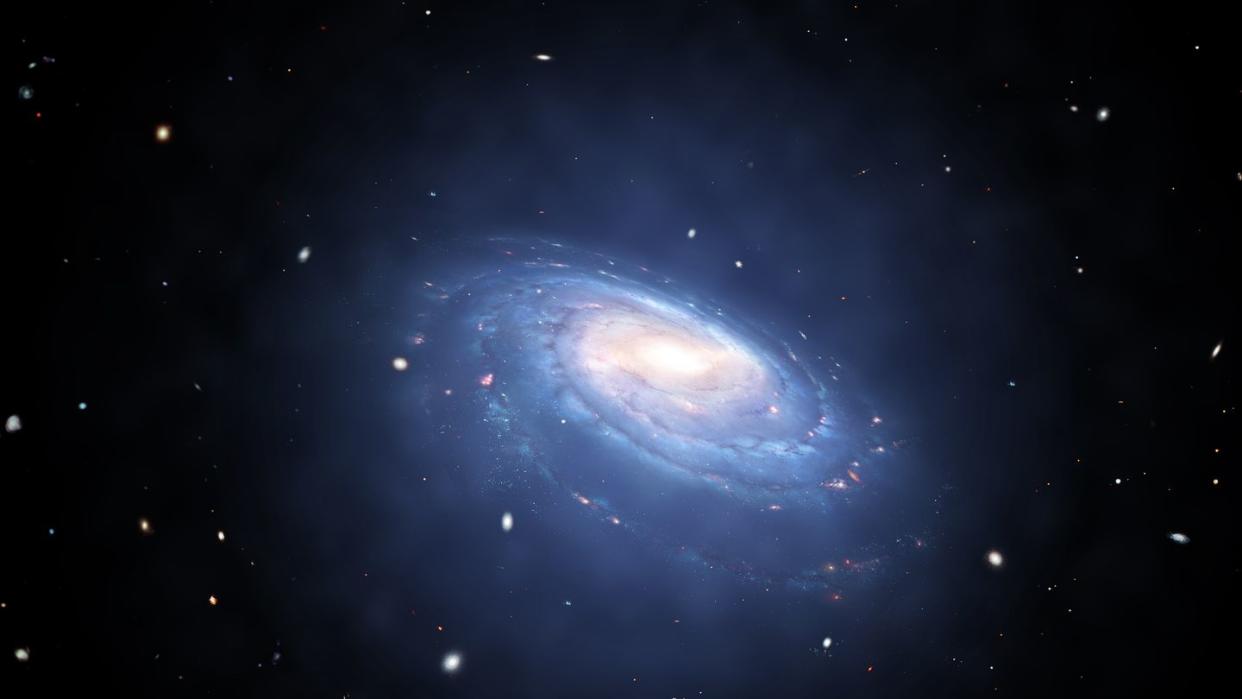Scientists Say There Could Be a ‘Mirror Universe’ Reflecting a Parallel Realm

"Hearst Magazines and Yahoo may earn commission or revenue on some items through these links."
Dark matter continues to elude detection, and scientists are looking at alternate theories to explain its absence.
One theory is that dark matter resides in a “dark mirror” universe that failed to form atoms during the nucleosynthesis of the Big Bang.
Every interaction in our universe, the theory explains, would have an accompanying interaction inside the dark matter universe—a new kind of universal symmetry.
A “dark mirror” universe sounds like a Star Trek plot point filled with fascistic first officers and facial hair, but the idea is actually a newly-proposed theory that could help explain the ever-elusive dark matter that supposedly fills about 85 percent of the known universe.
Various theories have tried to explain why we can’t seem to pinpoint dark matter. Maybe dark matter originated with a second big bang or it’s a self-interacting particle that goes along with a dark force. Could axions be the yet-to-be-detected key to unraveling this mystery, or (as string theory suggests), is the particle hiding in some extra dimension? In the absence of any direct detection of this theoretically pervasive particle, scientists have explored a kitchen sink of ideas, and now a new study published in on the pre-print server arXiv in late January proposes a new one—maybe a “dark mirror” universe, one where atoms failed to form, could be where all this dark matter is hiding.
“The identity of dark matter represents one of the greatest mysteries of Nature, whose resolution requires new physics beyond the Standard Model,” the paper reads. “Theories of DM range from those in which its physics is closely related to the Standard Model, to those in which it is utterly alien.”
This idea falls in the latter camp.
As described by astrophysicist Paul Sutter for Live Science, the idea posits that for every interaction of normal matter in our universe, a mirror interaction occurs in the universe of dark matter. Furthermore, the study suggests that while protons and neutrons have roughly the same mass in our universe, the same is not true in this hypothetical “dark mirror” universe. This could cause protons to evaporate, creating a free-floating sea of “dark neutrons” and a universe filled with its own “dark periodic table of dark elements,” an idea that’s been proposed in previous research.
“The absence of dark protons is not sufficient to prevent the formation of atomic dark matter. If two [dark neutrons] can form a bound state (dark dineutron), bigger nuclei of pure [dark neutrons] can form during dark Big Bang Nucleosynthesis, and can grow to be very large due to the lack of electromagnetic repulsion,” the paper reads. “Such nuclei of pure [dark neutrons] are perfectly valid dark matter candidates.”
This new paper isn’t the first to propose that dark matter could be hiding in another “mirror” universe. Scientists from the University of Toronto theorize that we could theoretically glimpse “dark matter” stars that form in this other universe if they contain clumps of normal matter. If a mirror star were to drift within the swirling gas of a nebula, for example, its immense gravitational pull—though weak—could affect normal matter in a way that’s distinct from standard matter interactions and make the mirror star observable. However, some scientists question if dark matter stars, which would be shorter lived than our normal stars, would even exist this long after the Big Bang.
That brings the search for dark matter—whether in this universe or in another “dark mirror” one—back to the same familiar game of hide-and-seek.
You Might Also Like
